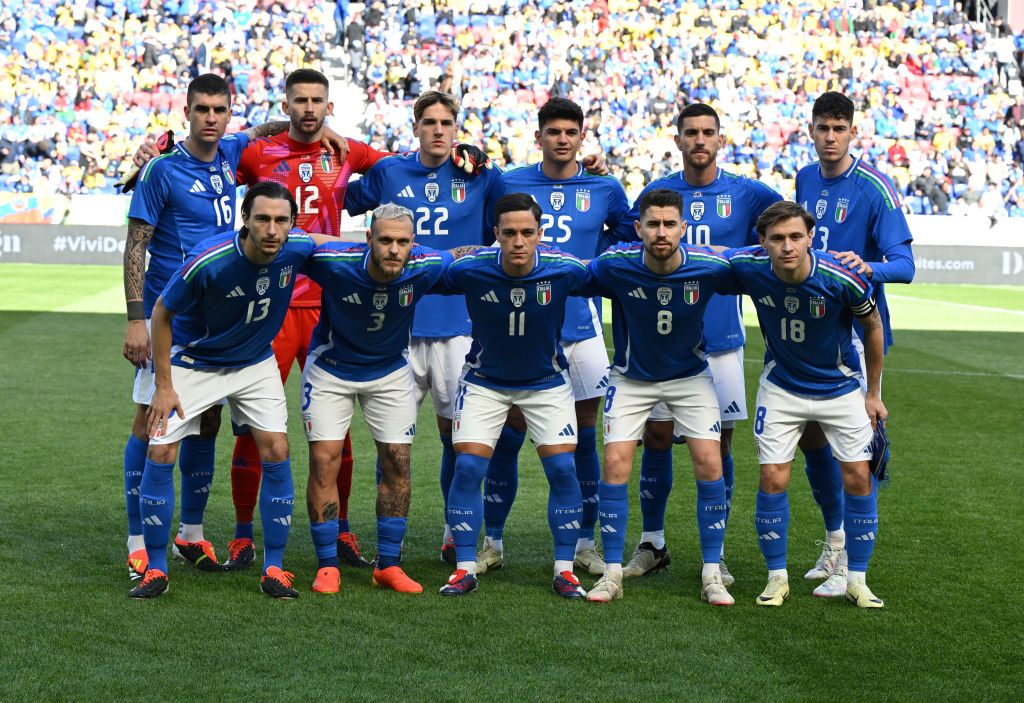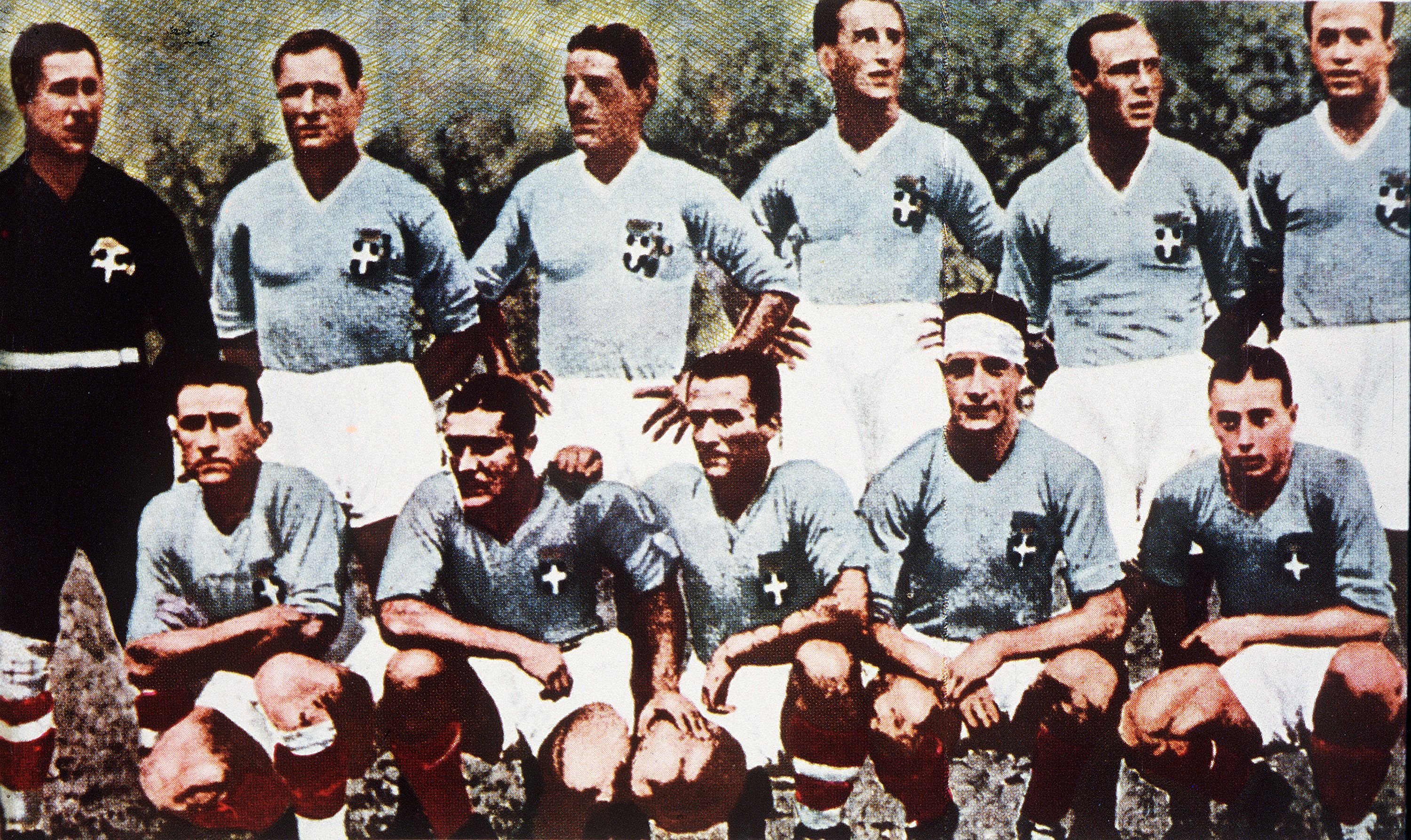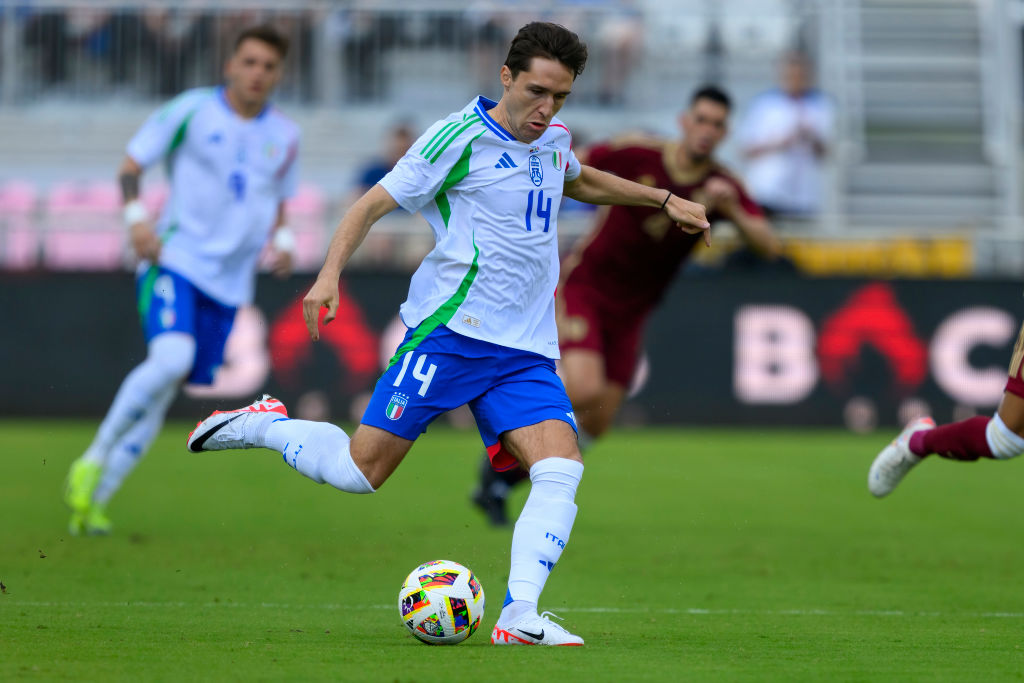
Generally speaking, international football teams wear colours that have some relationship to their flags. England play in white, Scotland play in blue, a whole load of African nations play in green…even Germany often have elements of black, red and gold in their kit.
So why are Italy one of the big exceptions? The Italian flag, of course, is made up of green, white and red stripes. No blue there, you notice.
Well, in fact, Italy originally wore white shirts and shorts when they first started playing international football back in 1910, though that was really in lieu of having decided on a proper colour yet rather than something they intended to be permanent.
Italy have not always worn their famous blue kit

The following year, Italy turned out in blue for the first time. Before we explain why, it’s worth bearing in mind that the modern united Italy that we know today is relatively new: before ten, the country was made up of numerous smaller states, which were consolidated through a protracted period of warfare from 1848 to 1871.
The end result was that Italy was eventually unified under the monarchy of the House of Savoy – who used savoy azure (or ‘blue’, for the Dulux impaired) as the border for their crest in the flag of the Kingdom of Italy, as the country was then officially known.
The Netherlands wear orange for similar reasons, with orange being the colour of the Dutch royal family. Yes, as in William of Orange.

Benito Mussolini’s rise to power in the 1930s saw Italy change to a black strip, which they wore at the 1938 World Cup, but Italy reverted to their traditional blue shirts, white shorts and blue socks after the fascist regime crumbled at the end of World War II – despite the monarchy also being abolished in 1946.
That’s way more bloodshed than you were expecting from a fun little bit about the history of a football kit, wasn’t it?
The Azzurri will strut their stuff as reigning European champions at Euro 2024 this summer, returning to major competition after missing out on the World Cup (again) in 2022.
Luciano Spalletti’s side have been drawn in a tough group as a result of their poor seeding: they take on Spain, Croatia and Albania in group B.







